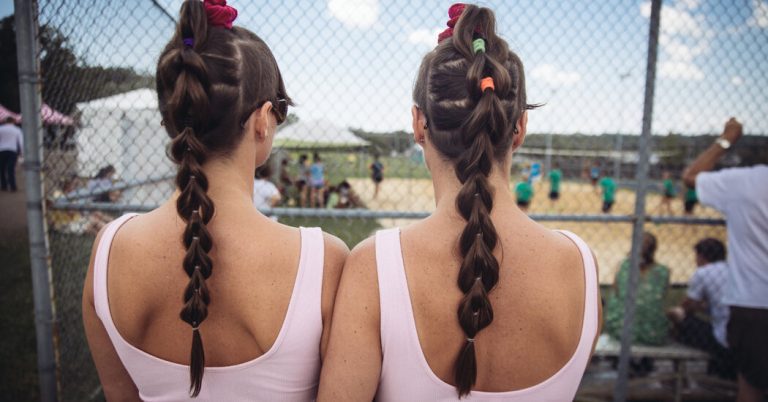Twins are a bonus for research psychologists. In a field constantly trying to tease out the effects of genetics, environment, and life experience, they provide a natural controlled experiment as their paths diverge, subtly or dramatically, into adulthood.
Take Dennis and Douglas. In high school, they looked so much alike that their friends could tell them apart from the cars they were driving, researchers in a study of twins in Virginia told them. Most of their childhood experiences were shared – except that Dennis endured an attempted molestation when he was 13.
At 18, Douglas married his high school sweetheart. He raised three children and became deeply religious. Dennis cycled through short-lived relationships and divorced twice, plunging into periods of despair after each breakup. In their 50s, Dennis had a history of major depression and his brother did not.
Why do twins, who share so many genetic and environmental inputs, differ as adults in their experience of mental illness? On Wednesday, a team of researchers from the University of Iceland and the Karolinska Institute in Sweden reported new findings about the role played by childhood trauma.
Their study of 25,252 adult twins in Sweden, published in JAMA Psychiatry, found that those who reported one or more childhood traumas — physical or emotional neglect or abuse, rape, sexual abuse, hate crimes, or witnessing domestic violence — had 2, 4 times more likely. to be diagnosed with a psychiatric illness like those who were not.
If a person reported one or more of these experiences, the odds of being diagnosed with a mental illness rose sharply, by 52 percent for each additional adverse experience. Among participants who reported three or more adverse experiences, nearly a quarter had a psychiatric diagnosis of depressive disorder, anxiety disorder, substance abuse disorder, or stress disorder.
To disentangle the effects of these traumas from genetic or environmental factors, the researchers limited the pool to “discordant” pairs, in which only one twin reported childhood abuse. An analysis of 6,852 twins from these discordant pairs found that childhood maltreatment was still associated with adult mental illness, although not as strongly as in the full cohort.
“These findings suggest a larger influence than I expected – that is, even after very rigorously controlling for shared genetic and environmental factors, we still observed an association between childhood adversity and poor adult mental health outcomes,” he said. Hilda Bjork Danielsdottir, a PhD candidate at the University of Iceland and first author of the study.
A co-twin who reported maltreatment was 1.2 times more likely to have a mental illness than the unaffected co-twin in identical twin pairs and 1.7 times more likely in co-twin pairs. This effect was particularly pronounced among individuals who reported experiencing sexual abuse, rape, and physical neglect.
Twins can differ in their experiences of childhood trauma for many reasons, Ms. Danielsdottir said in an emailed response to questions. In 93 percent of the cases in which one person reported rape, the other twin had not experienced it.
Although domestic violence is “inherently familial,” she said, and was a shared experience more than half the time, twins may have different dynamics with their parents. For example, a twin may be more likely to deal with a dysfunctional parent. Ms Danielsdottir is a twin herself and said she “can confirm that we have different relationships with our parents (both good).”
Rising figures
For decades, researchers have been accumulating evidence linking childhood abuse and maltreatment to disease later in life. A major 1998 study of 9,508 adults found a direct correlation between childhood maltreatment and heart disease, cancer, lung disease, and depression, often linked to behaviors such as smoking and alcohol use.
“That opened it all up,” said Dr. Jeremy Welleff, a psychiatrist at Yale University School of Medicine who has researched the effects of childhood adversity.
For decades, research had focused on biomedical models of mental illness, but the findings helped spur a shift toward examining the effects of childhood experiences, including social conditions such as racism, housing and poverty.
The two lines of research have merged in research mapping the impact of trauma on the brain. A 2022 report in Molecular Psychiatry, a Nature journal, pointed to specific changes in “stress-prone brain regions” in people who were abused as children and recommended that psychiatric diagnoses should add modifiers to reflect a history of trauma.
“These terrible things that happen to children and young people change the brain, physically change the brain and somehow cause mental illness,” Dr. Weleff said. “The mental illness that may have developed anyway is harder to treat, or worse, or perhaps even fundamentally different.”
By ruling out a role for genetic factors, the new findings will help remove any doubt that childhood abuse leads to worse mental health in adulthood, said Mark Bellis, a professor of public health at Liverpool John Moores University in Britain, who was not involved . in the study.
The findings add to the growing evidence that it will cost us all far less if we invest in addressing” child abuse and neglect now, he added, rather than “continue to pay for epidemic levels of harm.” cause downstream.




